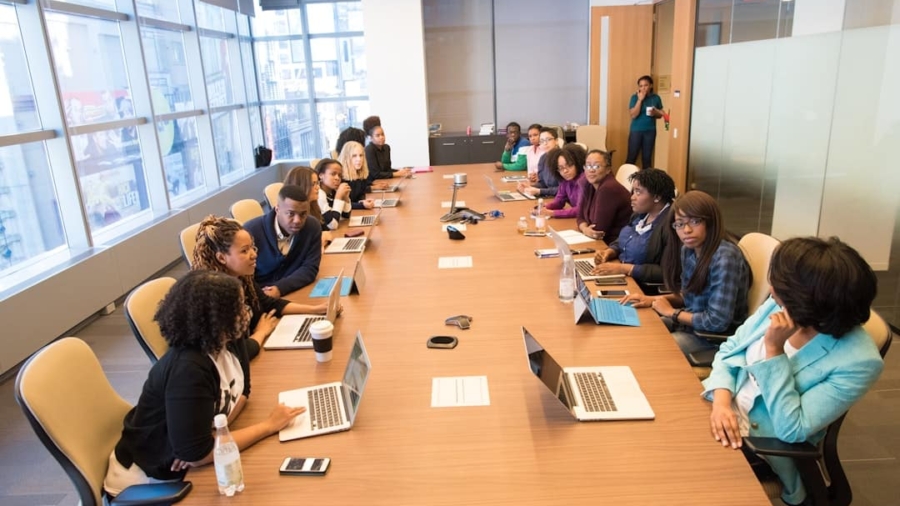Virtual reality (VR) has emerged as a transformative technology, reshaping various fields, including education, healthcare, and entertainment. One of the most intriguing applications of VR is in the realm of high-stakes negotiation simulations. These simulations provide a controlled environment where individuals can practice and refine their negotiation skills without the real-world consequences that accompany actual negotiations.
By immersing participants in lifelike scenarios, VR allows them to engage in complex negotiations that mimic the pressures and dynamics of real-life situations. High-stakes negotiations often involve significant financial implications, legal ramifications, or critical interpersonal relationships. The ability to navigate these negotiations effectively can mean the difference between success and failure.
Traditional training methods, such as role-playing or classroom instruction, often fall short in replicating the intensity and unpredictability of real negotiations. Virtual reality bridges this gap by creating immersive experiences that engage participants on multiple sensory levels, enhancing their learning and retention of negotiation strategies.
Key Takeaways
- Virtual reality (VR) is a powerful tool for high-stakes negotiation simulations, providing a realistic and immersive environment for training.
- Using VR for negotiation training offers benefits such as increased engagement, enhanced learning retention, and the ability to practice in a safe and controlled environment.
- VR negotiation simulations have real-life applications in various industries, including business, law, and diplomacy, allowing participants to practice and refine their negotiation skills.
- Immersion and presence in VR negotiation simulations play a crucial role in creating a realistic and impactful training experience for participants.
- While VR offers many advantages for negotiation training, challenges and limitations such as cost, technical requirements, and potential ethical considerations need to be carefully considered and addressed.
The Benefits of Using Virtual Reality for Negotiation Training
Hands-on Approach to Negotiation Training
This hands-on approach fosters a deeper understanding of the nuances involved in negotiation, such as reading body language, managing emotions, and adapting strategies based on the behavior of counterparts.
Personalized and Relevant Training Experiences
Unlike traditional training methods, VR simulations can be tailored to reflect specific industries or contexts, making them highly relevant to the participants’ professional lives. For instance, a corporate executive might engage in a negotiation simulation that mirrors a high-stakes merger or acquisition, while a diplomat could practice negotiating peace treaties in a politically charged environment.
Enhanced Training Experience through Customization
This customization enhances the training experience by ensuring that participants are not only learning negotiation techniques but also applying them in scenarios that closely resemble their actual work situations.
Real-Life Applications of Virtual Reality in Negotiation Simulations
The application of virtual reality in negotiation training is gaining traction across various sectors. In the corporate world, companies like PwC have developed VR training programs that immerse employees in negotiation scenarios relevant to their roles. For example, PwC’s “The Negotiator” program allows participants to engage with virtual characters representing different negotiation styles and tactics.
This interactive experience helps employees develop their skills in a way that traditional training methods cannot replicate. In the legal field, law schools are beginning to incorporate VR simulations into their curricula. Students can participate in mock trials or settlement negotiations that simulate real courtroom dynamics.
This not only enhances their understanding of legal principles but also equips them with practical skills that are essential for their future careers. By practicing negotiation techniques in a virtual courtroom setting, law students can gain confidence and competence before facing actual cases.
The Role of Immersion and Presence in Virtual Reality Negotiation Simulations
Immersion and presence are critical components of virtual reality experiences that significantly impact learning outcomes. Immersion refers to the degree to which participants feel enveloped in the virtual environment, while presence is the sensation of being physically located within that environment. In negotiation simulations, high levels of immersion and presence can lead to more authentic interactions and decision-making processes.
When participants feel truly present in a virtual negotiation scenario, they are more likely to engage emotionally and cognitively with the experience. This heightened engagement can lead to improved retention of negotiation strategies and techniques. For instance, a participant negotiating a high-stakes deal may feel the pressure of the situation more acutely in a VR setting than in a traditional classroom.
Challenges and Limitations of Using Virtual Reality for Negotiation Training
Despite its many advantages, the use of virtual reality for negotiation training is not without challenges. One significant limitation is the accessibility of VR technology. While costs have decreased over time, high-quality VR systems can still be prohibitively expensive for some organizations or educational institutions.
This financial barrier may limit the widespread adoption of VR training programs, particularly among smaller companies or those with limited budgets. Additionally, there are technical challenges associated with creating realistic and effective VR simulations. Developing high-fidelity environments that accurately replicate the complexities of real-world negotiations requires significant resources and expertise.
Furthermore, ensuring that virtual characters exhibit realistic behaviors and responses can be challenging, as it involves sophisticated programming and artificial intelligence capabilities. If the simulations do not accurately reflect real-life dynamics, participants may not gain the full benefits of the training experience.
The Future of Virtual Reality in High-Stakes Negotiation Simulations
Enhanced Realism and Interactivity
Innovations in artificial intelligence and machine learning are expected to enhance the realism and interactivity of VR training programs. For instance, AI-driven virtual characters could adapt their negotiation strategies based on participants’ actions, creating a more dynamic and responsive training environment.
Broadening Adoption Across Sectors
As VR technology becomes more accessible and affordable, we can expect broader adoption across various sectors. Educational institutions may increasingly integrate VR into their curricula, providing students with valuable hands-on experience before entering the workforce.
Improved Negotiation Outcomes and Enhanced Employee Performance
Corporations may also invest more heavily in VR training programs as they recognize the potential for improved negotiation outcomes and enhanced employee performance.
Ethical Considerations in Using Virtual Reality for Negotiation Training
The integration of virtual reality into negotiation training raises several ethical considerations that must be addressed. One concern is the potential for desensitization to high-stakes situations. If participants repeatedly engage in simulated negotiations without real-world consequences, they may become less attuned to the emotional weight of actual negotiations.
This desensitization could lead to a lack of empathy or understanding when dealing with real-life counterparts. Another ethical consideration involves data privacy and security. Many VR training programs collect data on participants’ behaviors and decision-making processes during simulations.
Organizations must ensure that this data is handled responsibly and transparently, protecting participants’ privacy while also leveraging insights to improve training programs.
The Impact of Virtual Reality on Negotiation Skills
The impact of virtual reality on negotiation skills is profound and multifaceted. By providing immersive experiences that closely mimic real-world scenarios, VR enables individuals to practice and refine their negotiation techniques in ways that traditional training methods cannot match. The benefits of experiential learning, tailored simulations, and heightened engagement through immersion contribute to more effective skill development.
As organizations continue to explore innovative training solutions, virtual reality stands out as a powerful tool for enhancing negotiation capabilities across various sectors. While challenges remain regarding accessibility and ethical considerations, the potential for VR to revolutionize negotiation training is undeniable. As technology advances and becomes more integrated into professional development programs, we can anticipate a future where virtual reality plays an increasingly central role in shaping skilled negotiators capable of navigating complex high-stakes situations with confidence and competence.
A related article to How Virtual Reality Is Being Used for High-Stakes Negotiation Simulations is How Smartwatches Are Enhancing Connectivity. This article explores the ways in which smartwatches are revolutionizing the way we stay connected in today’s fast-paced world. Just as virtual reality is transforming negotiation simulations, smartwatches are changing the way we communicate and interact with technology on a daily basis. Both technologies are pushing the boundaries of what is possible in our increasingly digital world.
FAQs
What is virtual reality (VR)?
Virtual reality (VR) is a computer-generated simulation of an environment that can be interacted with in a seemingly real or physical way by a person using special electronic equipment, such as a helmet with a screen inside or gloves fitted with sensors.
How is virtual reality being used for high-stakes negotiation simulations?
Virtual reality is being used for high-stakes negotiation simulations by creating immersive environments where participants can practice and refine their negotiation skills in realistic scenarios. This allows them to experience the pressure and dynamics of high-stakes negotiations in a safe and controlled setting.
What are the benefits of using virtual reality for high-stakes negotiation simulations?
Using virtual reality for high-stakes negotiation simulations offers several benefits, including the ability to practice in realistic scenarios, receive immediate feedback, and develop skills in a safe and controlled environment. It also allows participants to experience the emotional and psychological aspects of negotiations, which are often difficult to replicate in traditional training settings.
Are there any limitations to using virtual reality for high-stakes negotiation simulations?
While virtual reality offers many benefits for high-stakes negotiation simulations, there are some limitations to consider. These may include the cost of the technology, the need for specialized equipment, and the potential for technical issues or limitations in the simulation itself. Additionally, virtual reality simulations may not fully replicate the complexity of real-world negotiations.



